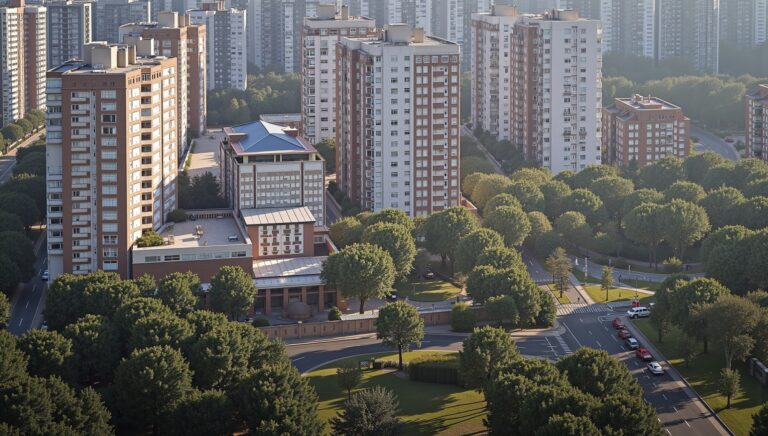The real estate market can often feel like a roller coaster, with prices rising and falling at alarming rates.
For those navigating this dynamic environment, understanding property bubble indicators is crucial.
A property bubble occurs when real estate prices are driven beyond their intrinsic value, often fueled by speculation and rapid demand.
This article aims to equip you with the knowledge needed to identify key property bubble indicators, ensuring you make informed decisions whether you’re an investor, a homeowner, or simply a keen observer of the market’s fluctuations.


Top Economic Indicators to Watch
When diving into Costa Rica real estate, it’s essential to keep an eye on the key economic indicators that can signal the stability or potential risks in the market.
One of the most critical aspects to monitor is property bubble indicators.
These indicators can provide investors with valuable insights into whether the real estate market is overheating.
For instance, consistent spikes in property prices that outpace wage growth can suggest that the market is experiencing overinflation.
Additionally, an increase in construction permits could hint at a surge in supply, which, if not matched by demand, may lead to a downward adjustment in prices.
Other important metrics include vacancy rates, as high levels can indicate a surplus of housing, and lending rates, which affect buyers’ purchasing power.
By analyzing these property bubble indicators, investors can make informed choices in the vibrant Costa Rica real estate landscape.
Behavioral Indicators: Buyer Sentiment and Market Psychology
Understanding buyer sentiment and market psychology is crucial when analyzing property bubble indicators in the Costa Rica real estate market.
As potential investors and homebuyers reflect on economic trends, interest rates, and local market conditions, their perceptions significantly influence demand and pricing.
For instance, if buyers believe that property values will continue to rise, they may rush to purchase homes, driving prices even higher and creating artificial inflation.
Conversely, if there’s prevailing uncertainty or fear—such as concerns over political stability or natural disasters—buyer sentiment can sharply decline, indicating a potential downturn.
By keeping an eye on these behavioral indicators, prospective investors in Costa Rica can make more informed decisions, helping them to avoid pitfalls associated with property bubbles and capitalize on genuine opportunities in this vibrant market.

Government Policies and Their Impact on Property Bubbles
Government policies play a pivotal role in shaping the real estate landscape, particularly in the context of property bubble indicators.
In Costa Rica, as in many other countries, these policies can either mitigate or exacerbate the risks associated with property bubbles.
For instance, favorable lending rates and incentives for foreign investors can stimulate demand, which may lead to rapid price increases and eventual market correction.
Conversely, regulations aimed at controlling speculation, such as stricter zoning laws or tax implications on non-resident property buyers, can act as a brake on unsustainable price hikes.
To navigate the intricacies of Costa Rica real estate, potential buyers should keep an eye on these property bubble indicators, monitoring changes in government policy and market dynamics closely.
Tips for Investors: How to Navigate a Potential Property Bubble
As an investor looking to dive into the vibrant Costa Rica real estate market, being aware of property bubble indicators is crucial for making informed decisions.
The presence of rapid price increases often signifies a speculative environment where values may not be sustainable.
Look for signs such as a surge in new construction projects without corresponding demand.
Secondly, monitor the local economic indicators; a strong job market and population growth can justify property price hikes, while stagnation or decline can signal an impending bubble.
Additionally, pay close attention to the number of days properties remain on the market—if homes are selling faster than usual without a proportional growth in demand, it might suggest inflated prices.
Remember to conduct comprehensive due diligence, including a market analysis, to assess whether the current pricing aligns with historical trends.
By recognizing these property bubble indicators, you can approach your investments in Costa Rica with greater confidence and a clearer strategy.
Frequently Asked Questions
What exactly is a property bubble?
A property bubble occurs when property prices rise rapidly to levels that are unsustainable and not supported by fundamentals such as income levels and demand.
Eventually, these bubbles burst, leading to significant declines in property values.
Why is it important to monitor property bubble indicators?
Monitoring property bubble indicators helps investors and homebuyers make informed decisions.
By understanding when a bubble may be forming, individuals can better time their investments and potentially avoid significant financial loss.
What are some key economic indicators of a property bubble?
Key economic indicators to watch for include rising home prices that outpace income growth, increasing mortgage default rates, over-leveraging by buyers, and a surge in speculative investment in real estate.
How does buyer sentiment affect property bubbles?
Buyer sentiment plays a crucial role in property bubbles as it can drive demand.
When buyers are overly optimistic and driven by fear of missing out, they may push prices higher, contributing to a bubble.
Conversely, panic or negative sentiment can accelerate a bubble’s collapse.
What tips can investors follow to navigate a potential property bubble?
Investors should conduct thorough market research, diversify their investments, set clear budget limits, and stay informed about economic indicators.
It’s also advisable to avoid making decisions based solely on market hype and to consider long-term property value rather than short-term gains.





